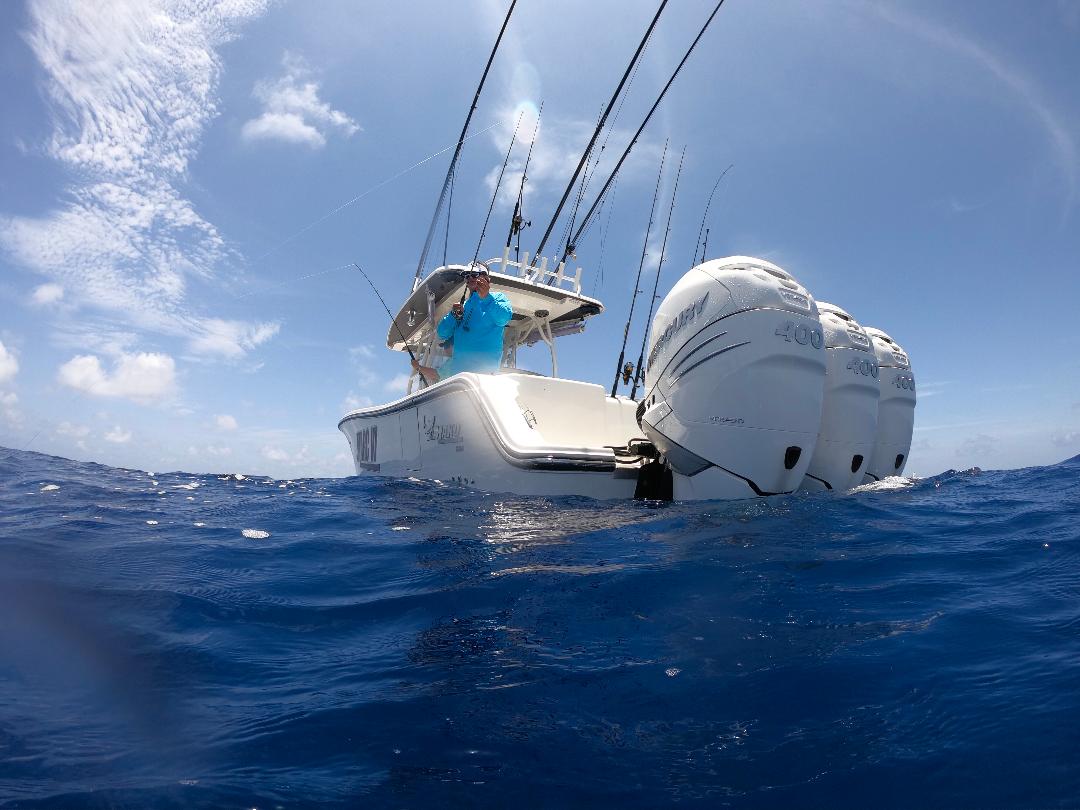
4 Essential Tips for Successful Bottom Fishing
Understand your saltwater prey before dropping bait to the bottom of the sea.

Any saltwater angler dropping a deep jig or live bait into the depths does so with the anticipation of hooking a trophy-class bottom fish. This mindset transcends all regions for species such as grouper, snapper, cobia, African pompano, halibut and even extreme deep-water oddities like Golden tilefish, barrel fish, queen snapper and others.
Yet, consistently catching bottom fish requires much more than simply sending a bait to the ocean floor. Outlined below are four essential tips to enhance your odds of keeping the rods bending and, of course, bringing home some excellent table fare.
MAKE IT BRAID
For serious bottom fishing, braid lines excel over nylon monofilament. By comparison, monofilament lines stretch as much as 25 percent. Provided that reel drags are properly set, this inherent stretch acts as a cushion against a pulled hook or broken line from sudden surges by powerful fish. It's an excellent choice for trolling and live baiting for offshore pelagic fish.
Braid has zero stretch. Therefore, proper drag settings become even more crucial. However, for bottom fishing, this lack of stretch provides greater sensitivity to feel what's going on and, in turn, set hooks effectively at considerable depths. In addition, braid is highly abrasion-resistant, a big advantage when fishing around bridges, over wrecks and along hard, erratic bottoms. Braid also has a much smaller diameter compared to a monofilament line of the same breaking strength; this promotes quicker sink rates.
 LIGHTEN UP!
LIGHTEN UP!
Two common misconceptions: (1) Very heavy leaders are required to survive being dragged across hard bottoms, and (2) large hooks are less prone to straightening when muscling a fish from its lair.
NO. 1: In reality, lighter leaders prove less discernible to fish for more bites, and their smaller diameters generate less resistance when penetrating the water column so it reaches bottom more quickly. The trick lies in selecting the lightest leader strength that can still withstand the abuse. With 20 and 30 lb. class outfits intended for red snappers, groupers and assorted large reef/wreck fish, try scaling down to 30, 40 or 50 lb. test leaders, versus 60 lb., 80 lb. and even heavier leaders. An uptick in bites will surely be noticed.
No. 2: The same theory applies to hooks. An oversized hook not only stands out to fish but hinders bait presentations. For bottom fishing with 20 and 30 lb. class outfits, for example, I'll use a 2X strong, in-line circle hook; the thicker wire gauge will not straighten. I'll select a hook size with a bite just large enough to latch in the corner of a fish's jaw, usually between a 4/0 and 7/0.
Once a circle hook sets, its eye – and the fishing line tied to it – remain on the outside of a fish's mouth. Gone are the threats of the lighter leader "sandpapering" across a fish's teeth. In-line circle hooks promote the use of lighter leaders which, in turn, result in more strikes.
LOSE WEIGHT
Similar to lightening up a leader system, choosing a sinker just heavy enough to reach bottom also helps fool more fish. It preserves the ability to feel that weight contacting bottom, the action of a live bait and a fish subtly "pecking" at or moving off with the bait. What's more, the less resistance a fish feels, the less likely it will be to shy away from the bait. You'll maintain better judgement as to when to set the hook or give a fish an extra moment or two to consume the offering.
BOAT MOVES
When anchoring is not a viable option, such as over deep wrecks, reefs and bottom structures, use the boat to slow the drift or hold in place. "Power drifting" is when a boat's outboards are used to stem the force of a current or drift, allowing a bait more soak time on a promising spot.
 Drifting with the current or wind is fine, as covering ground is often necessary to locate fish. However, if the pace is too swift, it becomes difficult to reach and hold bottom for any productive length of time. That's when power drifting really comes into play.
Drifting with the current or wind is fine, as covering ground is often necessary to locate fish. However, if the pace is too swift, it becomes difficult to reach and hold bottom for any productive length of time. That's when power drifting really comes into play.
Apply just enough throttle to remain over a specific target, lower baits to bottom and keep them within the strike zone. Shifting in and out of gear might be required to hold a precise position. Providing it's calm, activating Mercury's Skyhook Digital Anchor will do the work for you, enabling all hands to fish. After wearing out one spot, simply idle over to another and repeat the tactic.
Just recently, off the Dry Tortugas (75 miles west of Key West in the Florida Keys), we power-drifted above a ridge in 250 feet of water and lowered live pinfish to the bottom. I hooked up with a 55-pound black grouper, eventually beating the fish after it "rocked up" four times during the fight. A testament on how braid lines, lighter leaders, smaller hooks and power drifting can score more and bigger bottom fish, I was using a 20 lb. class spin outfit with a 50 lb. test leader and 4/0 hook.
Article & Photo Credit: George Poveromo | George Poveromo's World of Saltwater Fishing















